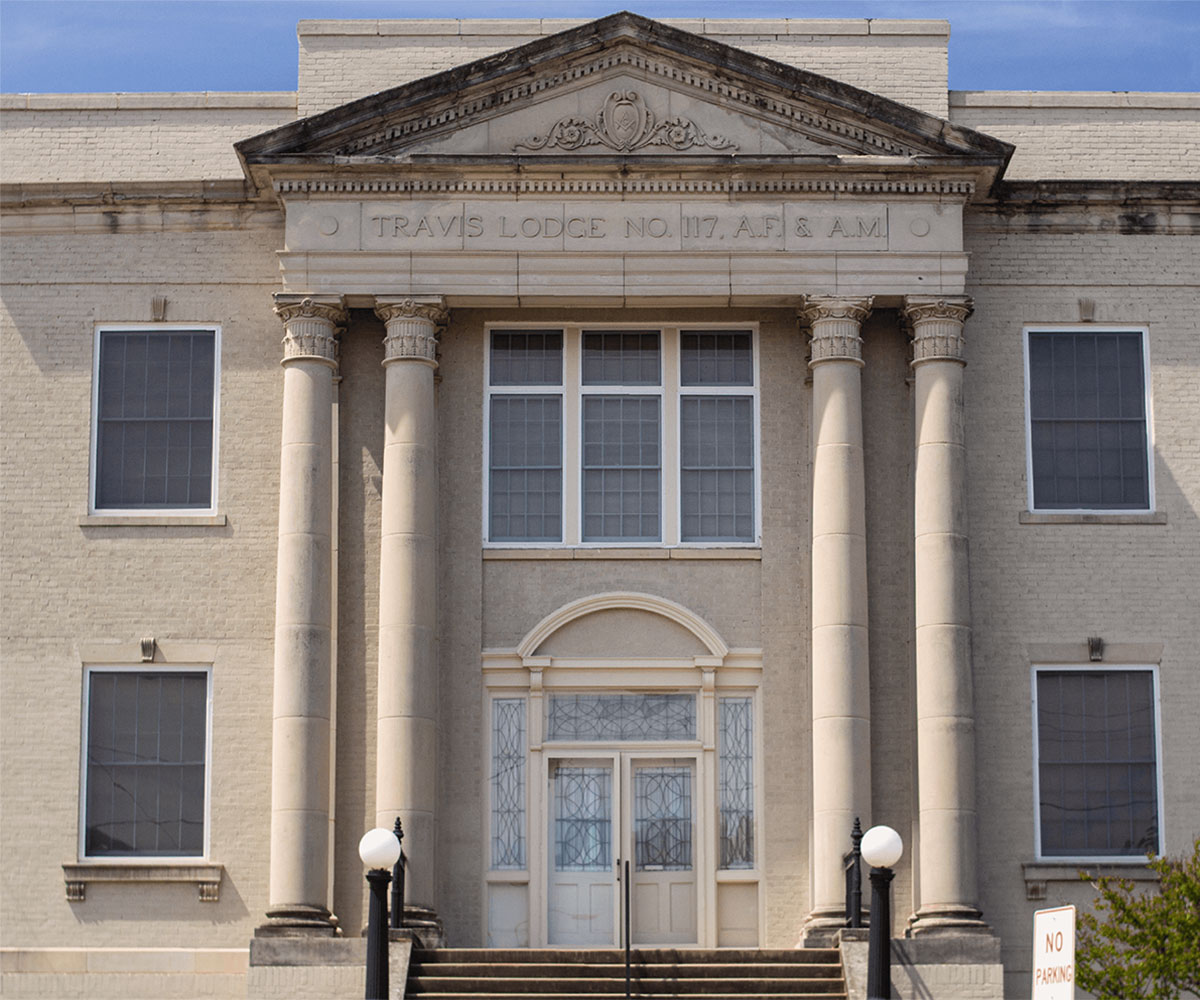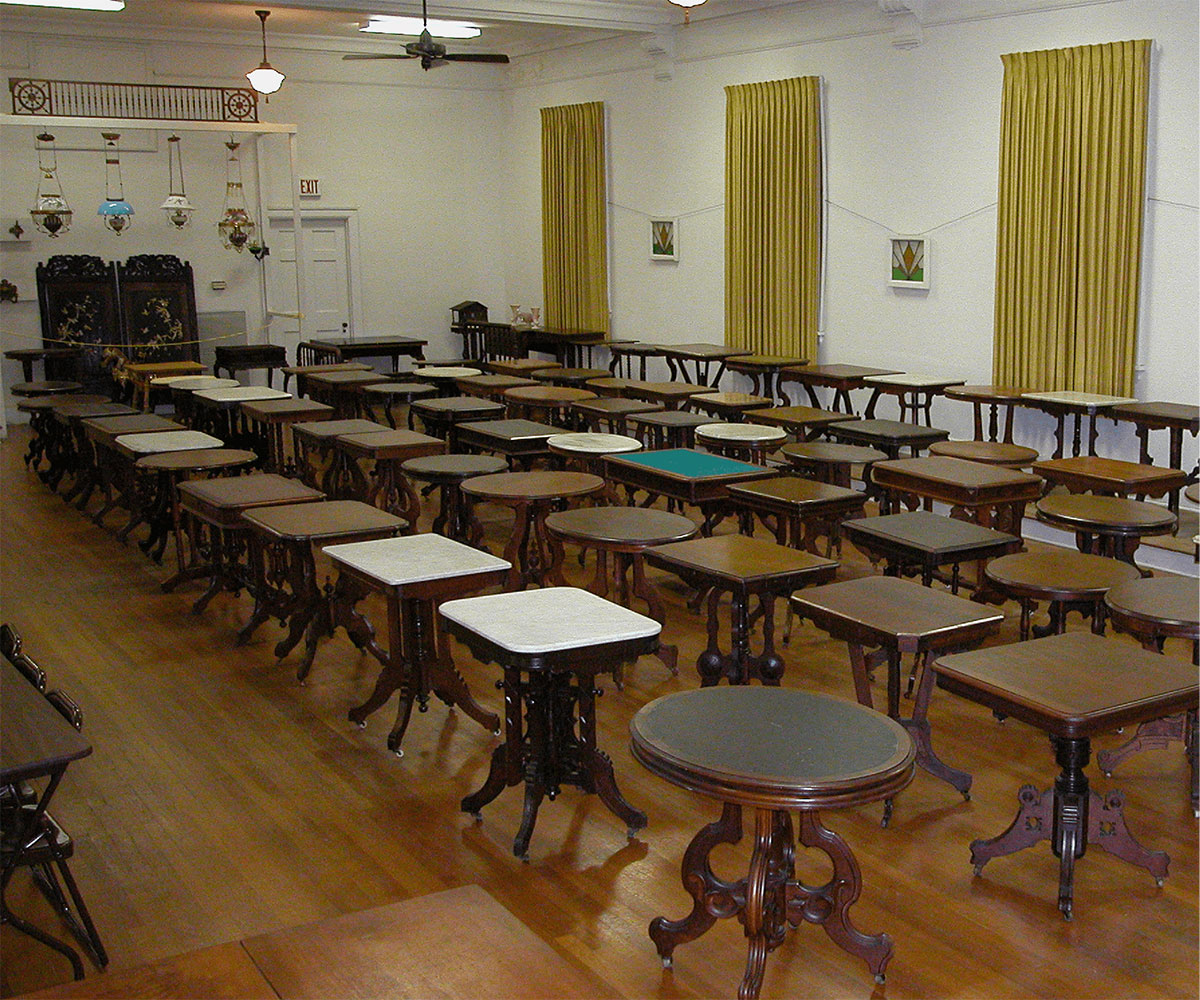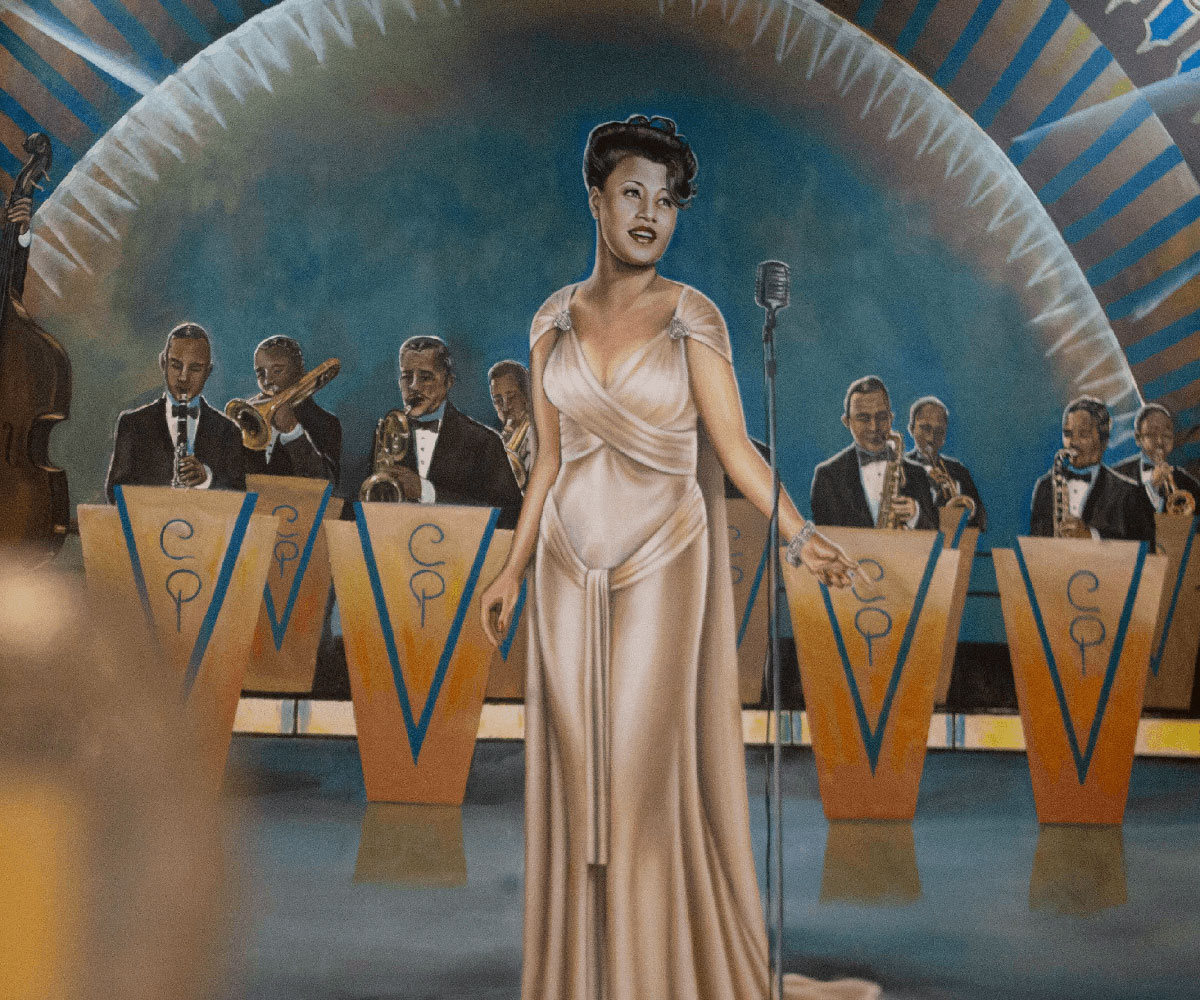Building History
Masonic Lodge
1925 – 1984
The Neo-Classical Revival style building which houses the Sherman Jazz Museum was originally the Masonic Lodge Temple – used by the Masons for 60 years. When construction was begun in 1924, this was one of the largest Masonic halls in the state of Texas. The Sherman Chapter was organized in 1842, making it one of the oldest organizations in Grayson County. The lodge was named for the distinguished Colonel William Barret Travis, commander at the Alamo. Throughout the restoration process for the Jazz museum, diligent effort was made to retain the original architectural style, keeping many of the original doors, floors, ceiling fans, hardware and lighting. In 1984, the building was listed in the Sherman Preservation publication, Preserving Architectural Heritage and subsequently sold to Bill Collins Jr. who used it as a location to store and display American Victorian walnut furniture.


Masonic Lodge
1925 – 1984

The Neo-Classical Revival style building which houses the Sherman Jazz Museum was originally the Masonic Lodge Temple – used by the Masons for 60 years. When construction was begun in 1924, this was one of the largest Masonic halls in the state of Texas. The Sherman Chapter was organized in 1842, making it one of the oldest organizations in Grayson County. The lodge was named for the distinguished Colonel William Barret Travis, commander at the Alamo. Throughout the restoration process for the Jazz museum, diligent effort was made to retain the original architectural style, keeping many of the original doors, floors, ceiling fans, hardware and lighting. In 1984, the building was listed in the Sherman Preservation publication, Preserving Architectural Heritage and subsequently sold to Bill Collins Jr. who used it as a location to store and display American Victorian walnut furniture.


AMERICAN VICTORIAN WALNUT FURNITURE MUSEUM

AMERICAN VICTORIAN WALNUT FURNITURE MUSEUM


Jazz Museum
2010 – Now


Jazz Museum
2010 – Now


